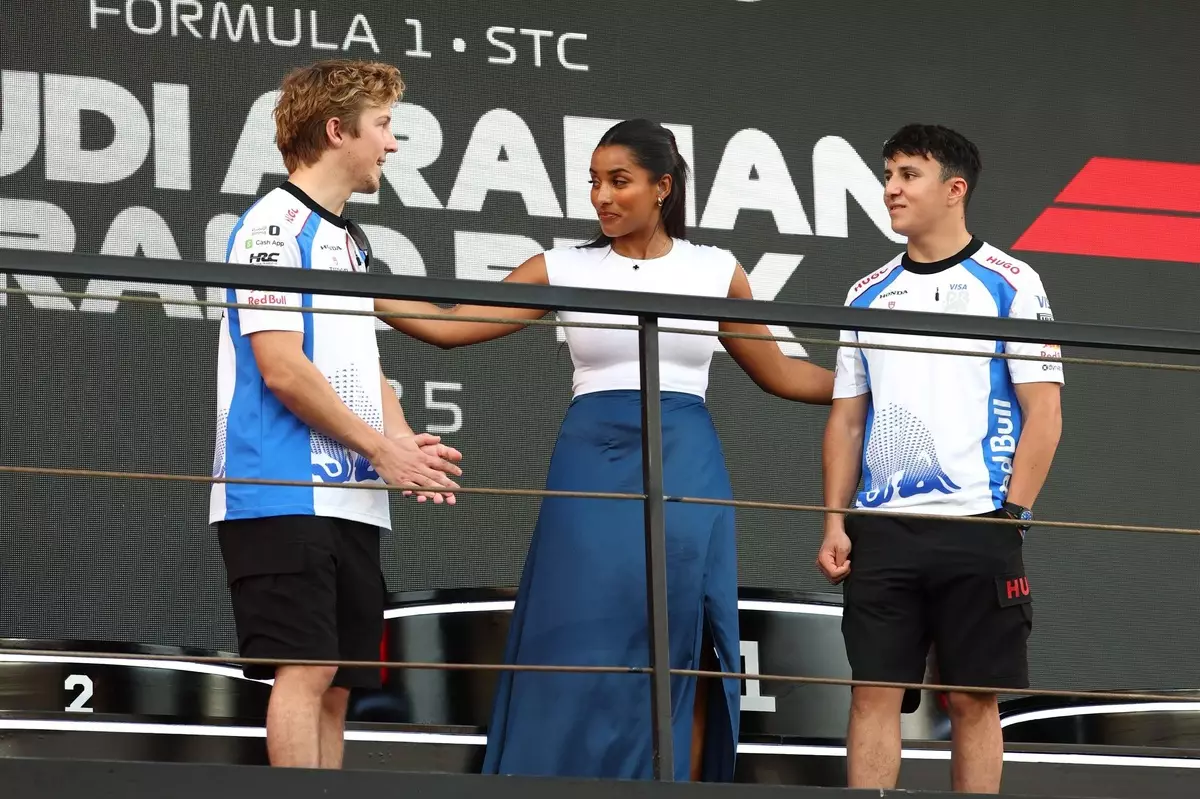In the fast-paced world of Formula 1, the stakes are ever-present, and the pressure on rookie drivers is immense. The recent performance of Liam Lawson and Isack Hadjar, teammates at the Racing Bulls Formula 1 team, illustrates the nuances of rapid adaptation in a high-stress environment. Following Lawson’s return from a short stint with Red Bull, both drivers have exhibited a remarkable ability to navigate the circuit’s complexities. Lawson’s qualifying success against Hadjar by a slim margin signifies more than just a winning lap; it reflects an athlete’s journey through setbacks to assert their place in a fiercely competitive sport.
Both racers had different experiences during the Saudi Arabian Grand Prix. Lawson’s 11th-place finish, marred by a penalty, reveals the razor-thin margins that define F1 racing. Despite performing admirably on the track, he faced a setback when penalized for overtaking off-track. This incident exemplifies how easily fortunes can shift within the confines of racing regulations and the critical decisions that can lead to missed opportunities for points.
Strategic Insights and Operational Challenges
Both drivers executed strategies common among competitors, yet the outcomes diverged sharply. Lawson’s struggle to solidify his position, even after overtaking formidable opponents, emphasizes the importance of strategy in F1 racing. Unlike Lawson, Hadjar capitalized on an alternate pit strategy and secured a crucial point, showcasing his ability to adapt and thrive amidst chaos. His performance underscores the often-overlooked element of race strategy and the way it can dramatically alter a driver’s standing during a race.
However, Hadjar’s frustration at being stuck behind competitors despite having fresher tires serves as a reminder that speed doesn’t solely define race strategy. Factors beyond a driver’s control, such as track position and competitors’ defensive tactics, can negate the advantages gained through superior tire management or race pace. This duality offers valuable lessons for both aspiring drivers and team strategists about the intricacies of competitive racing.
Team Dynamics and Personal Growth
The dynamic between Lawson and Hadjar raises fascinating questions about camaraderie and competition within the team environment. Hadjar’s recognition of Lawson’s enhanced performance speaks volumes about mutual respect, highlighting how competition among teammates can foster growth. As Hadjar noted, racing against someone who pushes one’s limits can sharpen a driver’s skill set, albeit with a hint of competitive tension. This developing rivalry illustrates a truth often observed in sports: fierce competition can coexist with genuine support and respect.
Moreover, Lawson’s reflections on his own progress and feelings of being “fully dialed in” signal a crucial moment in his career trajectory. It points to the essence of resilience in sports, where overcoming previous challenges lays the groundwork for future successes. For those watching from the sidelines, his journey serves as a beacon of hope, demonstrating that setbacks can ultimately lead to tremendous opportunities for growth.
Emotional Resilience and Passion Persistence
Perhaps the most inspiring aspect of this narrative is the sheer passion both drivers possess for racing. Hadjar’s candid admission of love for the sport, even after a disappointing start to the season, epitomizes the dedication required to excel in such a relentless field. This unwavering devotion is where true champions are forged, revealing that initial failures can serve as stepping stones rather than stumbling blocks.
The emotional rollercoaster experienced by Lawson after his demotion is another vital thread of this story. Returning to a fresh environment and finding his footing amidst fierce competition illustrates the need for emotional agility in sports. It also reinforces the idea that success in F1 transcends mere physical capability; mental resilience and self-belief are equally crucial in overcoming adversities.
The recent happenings involving Lawson and Hadjar are a profound reminder of the intricate tapestry of emotions, strategies, and relationships that define Formula 1 racing. These young drivers are not just racing against the clock; they are embodying resilience, teamwork, and an uncompromising love for the sport as they navigate the high-octane world of racing.

